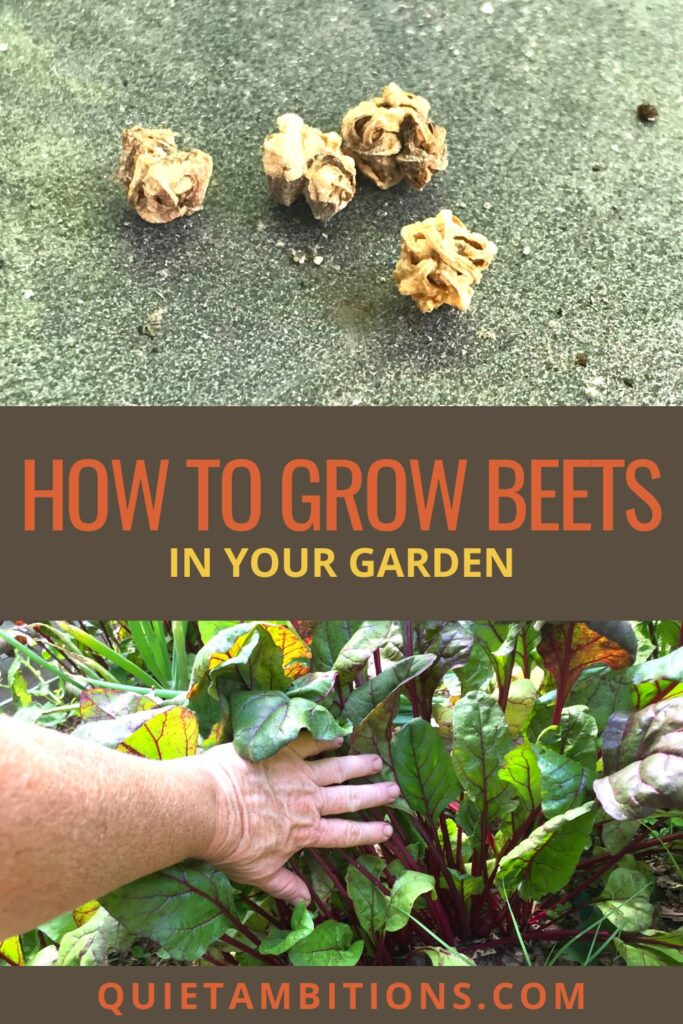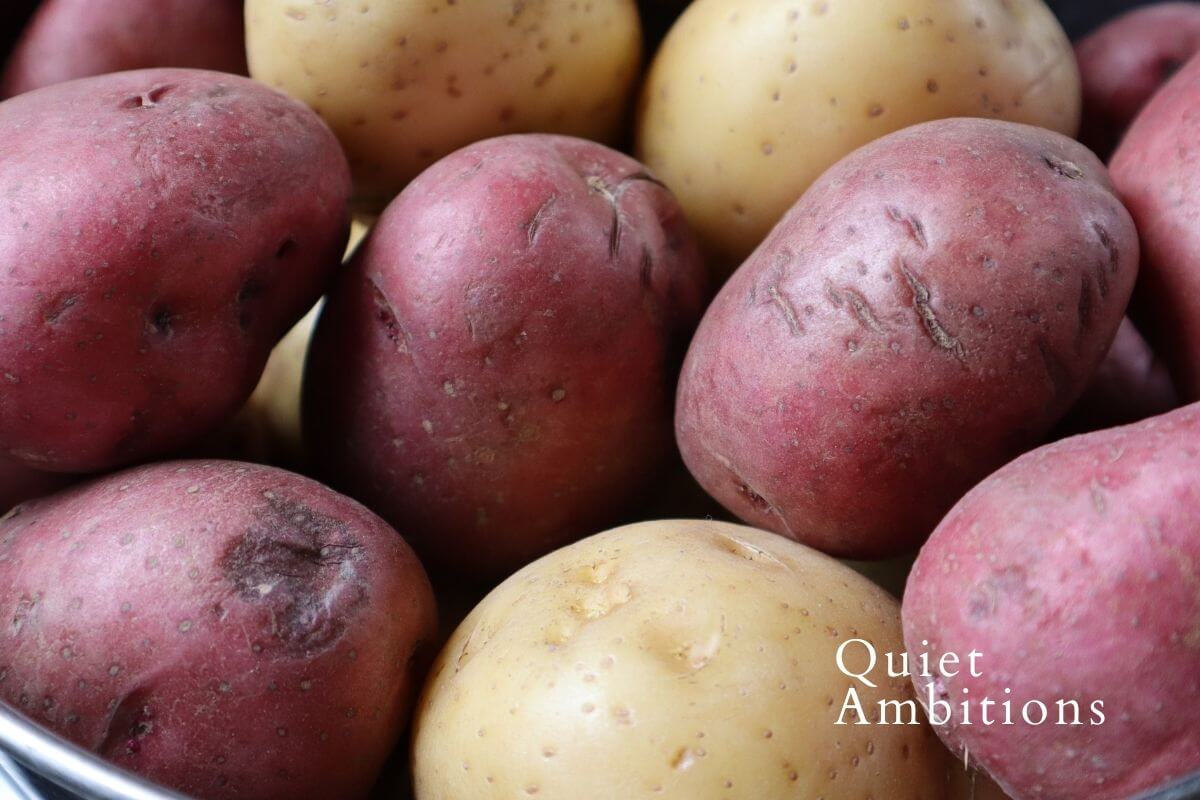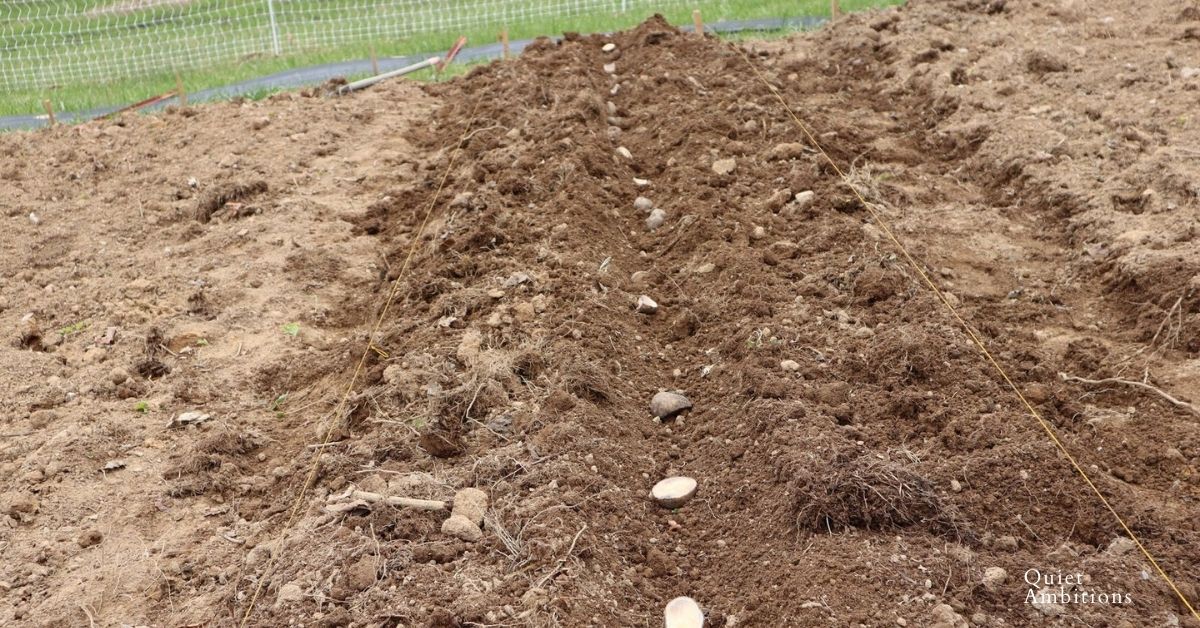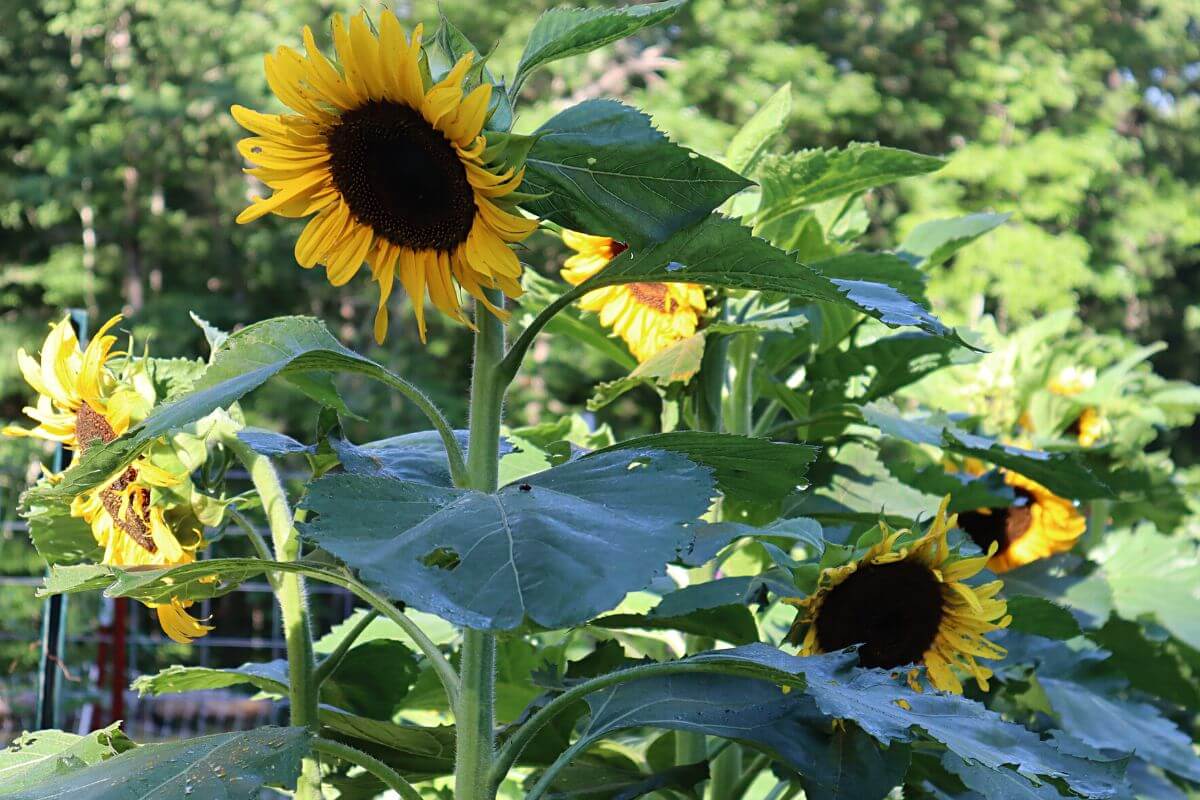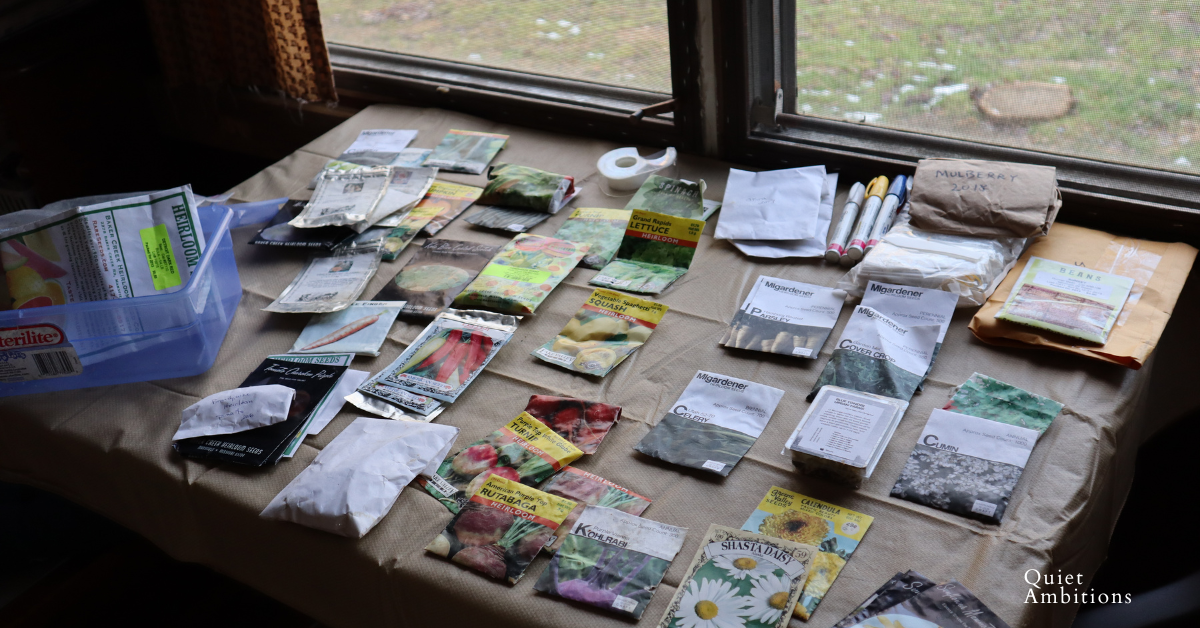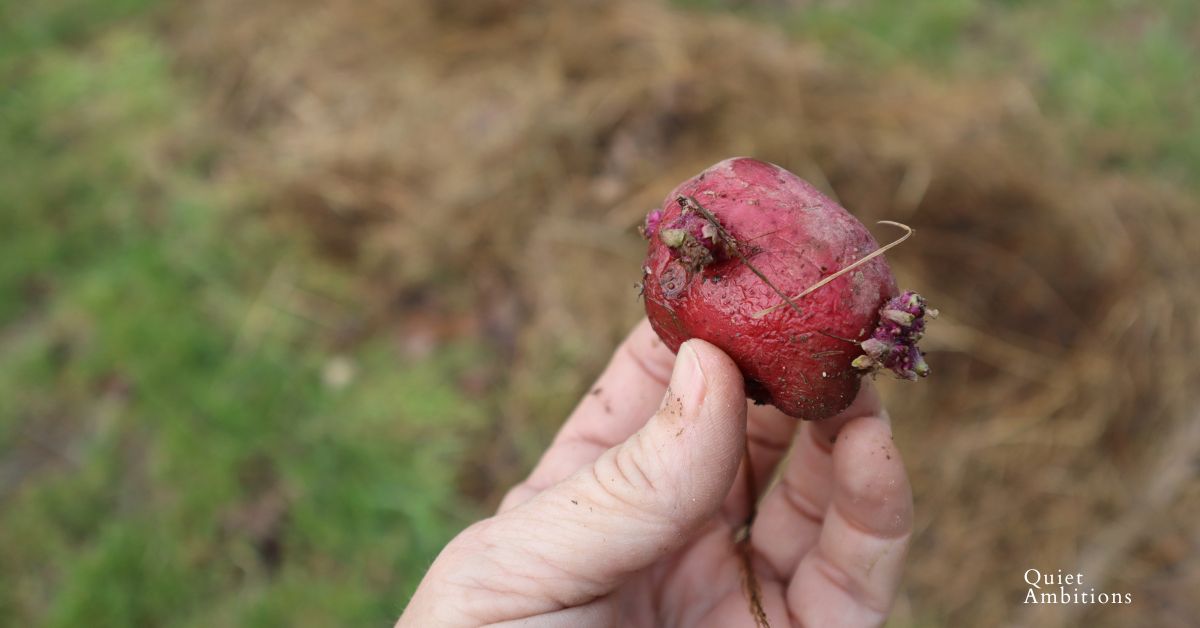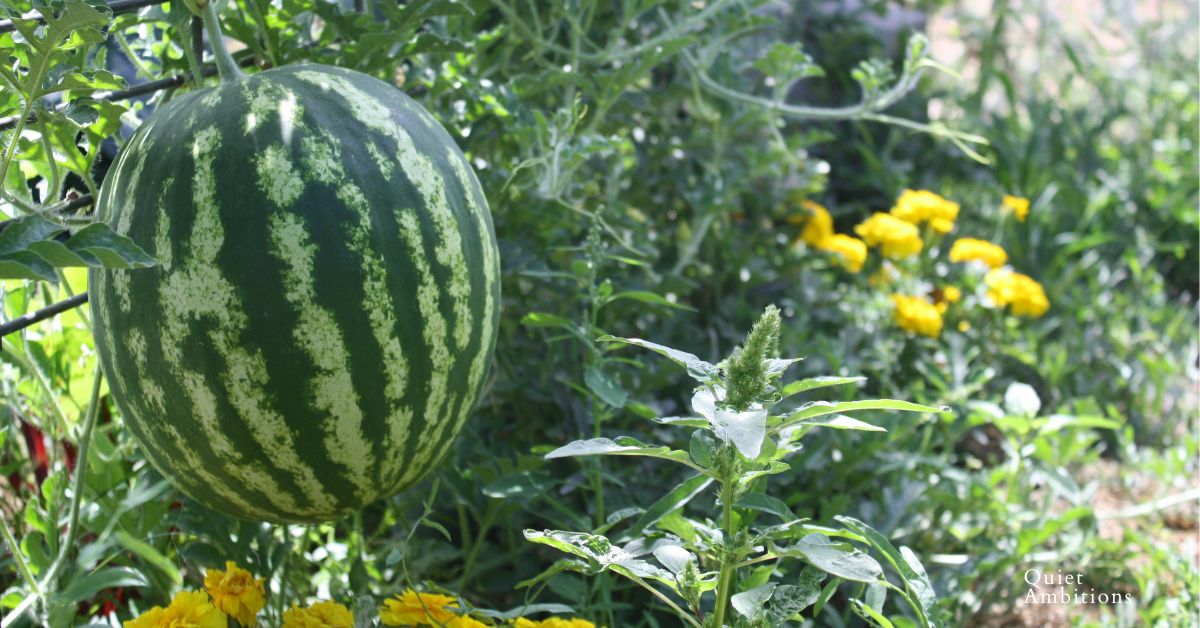How to Grow Beets in Your Garden
Everyone has their favorite vegetables, and beets are certainly one of mine! With their bright colors and high nutrient value, I think beets are one of the best crops you could grow, plus they taste great canned and pickled too. In this guide, I’ll teach you how to grow beets from seed, sharing everything you need to know along the way.
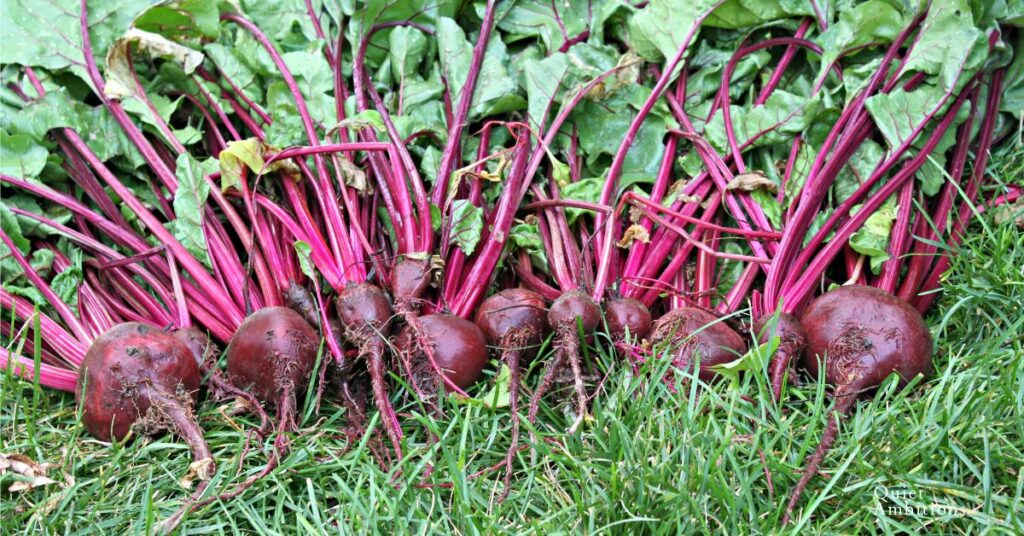
Different Types of Beets
Before I talk about growing requirements, let me mention the different types of beets first. Most people think of beets as being round and deep red—like the beets you’ll most commonly see at grocery stores and some farmer’s markets. There are actually several other types of beets, however, including pink beets, yellow or golden beets, white beets, and even striped beets (also known as Chioggia beets). Most beets I’ve seen are round, but some are more elongated or cylindrical in shape instead.
What types of beets do I grow?
Well, I usually stick with traditional rounded deep red varieties. We have our standby favorite, and a new to me heirloom variety. Detroit Beets are what I’ve planted in the past. This year I’m adding a longer cylindrical-shaped beet to my garden. The name Beet Crapaudine kind of made me laugh. (I have no idea how to pronounce it!) But they are deep red so they work! They are apparently an ancient heirloom variety so I’m hoping they will be delicious. If so I’ll be saving the seeds.
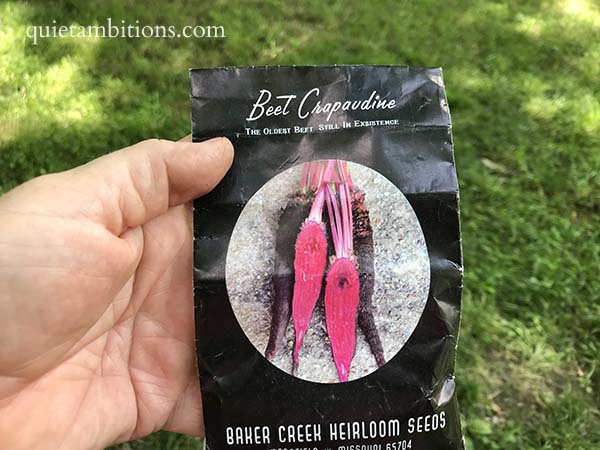
I’m not convinced that the various colors available in some beet varieties will be appealing to my family. Red stripes would be fine but yellow beets? Kind of like purple potatoes…. purple potatoes!?! It just doesn’t seem right. Haha we are pretty traditional in our eating. Who knows maybe someday I’ll get more adventurous.
How to Grow Beets
The instructions on this page will work for basically any color and shape you’d like to grow. Since I just moved to Tennessee from Colorado, I’ll probably try some different varieties in the future, if I find my favorite varieties from Colorado don’t grow as well here. Time will tell!
Growing Beets Quick Tips
Suggested Soil Temp: 40 to 50 degrees F
When to Sow Indoors: 4 weeks before Last Spring Frost
When to Sow Outdoors: 2 to 3 weeks before Last Spring Frost or 4 to 8 weeks before First Fall Frost
When to Grow: Spring, Fall
Seed Depth: 1/2”
Days to Germination: 5 to 8 Days
Spacing: 1” to 2”
Light Requirements: Full Sun/Partial Shade
Watering Requirements: Regular
Good Companions: Cabbage, kohlrabi, kale, cauliflower, broccoli, onion
Bad Companions: Swiss chard, spinach, pole beans, amaranth
How to Plant Beets
Seeds should be planted in the cooler months of the year, in soil that has warmed slightly. The soil and timing are important. And fun because they are early crops! I love things that I can plant early in the spring. Basically get them in the ground when you can work the soil. Even if it is a few weeks before your last freeze date.
Soil for Growing Beets
Like many garden crops, beets prefer deep, well-worked dirt that’s high in organic matter. (The organic matter is what makes the soil dark and fluffy.) They do well in raised beds as the soil is usually deep and loose.
Before planting, remove any obstacles like roots, rocks, and clods of unbroken dirt from the soil before planting, as these can interfere with proper beetroot development. Beets have long tap roots that like to go deep in the soil.
While your beets are germinating, do NOT allow the soil to form a crust of any kind—that’s particularly hard on root crops like beets that have to push through the dirt. Soil that is high in organic matter is less likely to cause problems.
Side note: When we researched one extension mentioned that sandy soil is better for spring beet crops, while heavier soil is better for fall beet crops. I’d never really heard that before, but it does make sense, since heavier soil would trap the heat as the temperatures drop in the fall. Thus allowing the beets to grow a little longer even if the air is cold.
Beets are heavy feeders; that just means they will pull a lot of nutrients from the soil as they grow. Just don’t provide too much nitrogen if you want large beetroots. Lots of nitrogen will get you lots of greens but then the energy doesn’t go to the root. Balance in all things.
Beets especially need a mineral called “boron” to develop healthy roots. Lack of boron could cause dark spots in your harvest. I found this information in researching growing beets tips. I’ve honestly never done anything with boron but I found it interesting. This is an article that talks about boron, borax and how it affects beets. You need to do a soil test to see if it is needed.
Planting Beet Seeds in the Garden
Did you know…a single beet “seed” is actually a cluster of two to six seeds together?
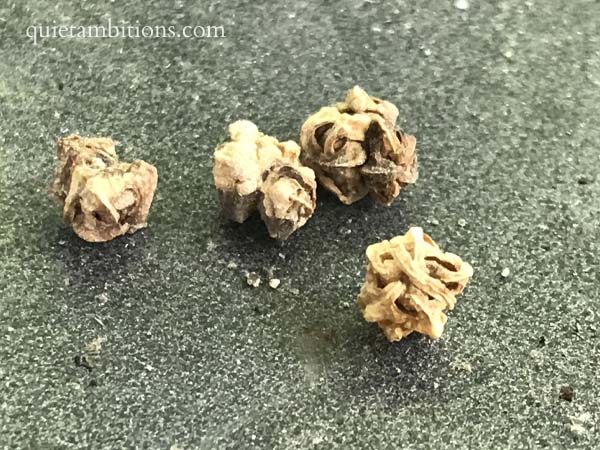
Plant your beet seeds 1/2″ deep and 1” to 2” apart initially. The plants will need more space to grow as they get bigger, however, so once the seedlings are roughly 4” tall, you should thin and remove the extra plants. Final spacing should be closer to 4” apart. This extra space lets the beets have plenty of room to grow without crowding each other, which is especially important for root crops. Rows should be about 10-12 inches apart.
While I’ve never tried it, you may soak your seeds in water for 12-24 hours before you plant them, to help them germinate better in the garden. I do this with peas but I’ve never bothered with beets.
How to Thin Beets
So usually beets are thinned when they are 2-4 inches tall. And most methods say to remove extra plants so you have individual beet plants 4 inches or so apart. I do things just a little different. I do thin at 2-4 inches tall. But just make sure there are no big clusters or 5 or more that are super close. I thin so I’ve got 3 or 4 in a cluster with each cluster about 3-4 inches apart.
Then I wait a few weeks and thin again when I’ve got beets that are 3 inches or so in diameter. Just big enough to cook and have with a meal. The result is I’ve got extra baby beets for supper and a supply of baby beet greens. After this second thinning each beet will be more solitary and have plenty of room to grow and fill out bigger for more suppers or canning and preserving for later.
Sometimes even after this second thinning I’ll have 2 beets close together. That doesn’t bother me because beets will grow in close proximity as long as each beet has room to expand. You would not want a big bunch. Individual is probably best but 2 together is not the end of the world..
How to Plant Beets Indoors
Planting root crops like beets indoors and then transplanting them isn’t a common practice among gardeners. But I’ve seen it recommended several times lately so I actually decided to try it this year. (I’m all about experimenting in the garden). I did a video here on how to plant beets indoors.
You can plant beet seeds in small containers or plastic seedling trays filled with potting soil.
I tried using egg cartons this year as I was short on seedling trays. It worked well for some plants, not so good for others. Ilve got more on starting seeds in egg cartons here.
Provide water, warm temperatures, and strong light as the seedlings sprout. Mine went in our greenhouse. The plants will be ready to go in the garden when they have 3 or 4 true leaves.
When it is time to plant out in the garden, gradually acclimate young seedlings to the outdoor environment, a little bit at a time. (This is called “hardening off” and I hope to write another article about it soon.)
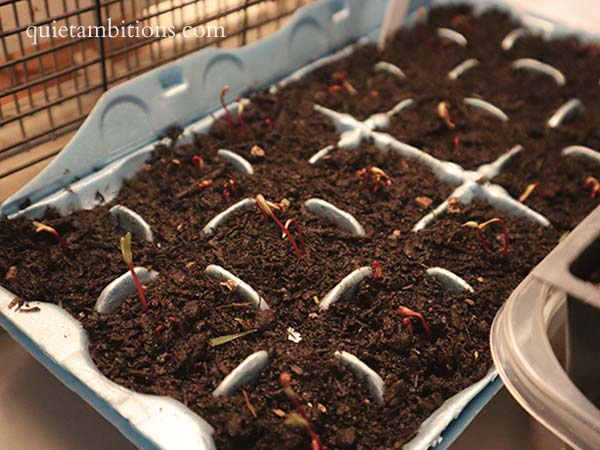
Transplant the young seedlings (about 5-6 weeks old) into your garden by digging a hole, carefully placing the beet seedlings and plant into it, and filling in with soil. Try to plant them just the same depth that they are in the container. Care for the transplanted seedlings as if they were regular beet plants.
When to Plant Beets
Plant beets in either the early spring or fall, specifically around 2 to 3 weeks before your last frost in the spring or 4 to 8 weeks before your first frost in the fall. They can handle some cold weather and will even withstand a light frost.
If desired, you could plant a new round of seeds every few weeks. This is called successive planting. Each planting will come to maturity at a different time, so you have a steady supply of beet harvests coming into your kitchen. I do this often.
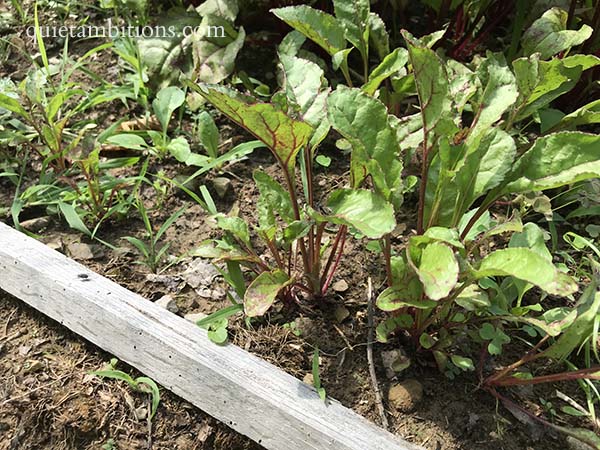
How to Grow Beets
Weed Control for Beets
Like many garden crops, beets don’t like competing with weeds, so you should carefully remove weeds from the rows as needed. You may also want to spread mulch around your plants and between the rows, which helps cut down on the weeds as well.
I always use grass clippings and leaves in my garden, though you could also use something else like hay or straw. Some will say don’t use hay! It has weed seeds. This might be true, but if your garden is mulched regularly your soil will be soft and beautiful. The weeds will pull out easily. I’ve used hay with no problems.
How Much Water Do Beets Need?
Beets generally need regular, yet moderate water (approximately 1” of water per square foot per week). You don’t want to drown your plants, nor allow them to fall prey to drought either, so you’ll need to keep an eye on the weather and your plants to know when they need a drink.
Overwintering Beets
Beets can be overwintered in milder winter climates. This just means planting your beets early in the fall, then allowing them to remain in the garden through the winter, harvesting roots as desired. Winter beets will generally have a better flavor, like other overwintered root crops. That cold weather makes them nice and sweet.
Companion Planting for Beets / Beets Companion Plants
There are several plants that make good companions for beets in the garden. These include plants in the cabbage family, including cabbage, kohlrabi, kale, cauliflower, and broccoli, as well as onions. Plant these crops near your beets!
I’ve got onions planted next to both my beets and carrots this year.
Avoid planting beets after or near Swiss chard and spinach (and I assume amaranth too), which are all related to beets so they will attract the same pests. With a larger concentration planted together there may be even more attraction and issues.
Growing Beets in Containers
Though I’ve never tried it, you could certainly grow beets in containers filled with potting soil if desired, providing they are deep pots. Shoot for a minimum 10 to 12 inches in depth. More is better. Beets have deep taproots. Make sure the containers can drain properly and that they receive proper sunlight and water.
Common Beet Pests & Diseases
Beets aren’t immune to pests and diseases, even though they’re a root crop.
The primary way to prevent diseases is to avoid providing too much water, as well as ensuring proper airflow around the plants. Disease (especially fungus) thrives in moist, stagnant conditions, like a weedy patch of crowded plants that are drenched in overhead water.
If signs of disease do appear, be careful to remove infected plants and don’t cross-contaminate with dirty garden tools. Not planting beets in the same space year after year is also a good idea, as crop rotation helps prevent diseases.
Possible insect pests for beets include flea beetles, leafhoppers, aphids, grasshoppers, blister beetles, and different types of worms. Some of these insects may spread diseases as well. Row covers are a common way to prevent problems, while manually removing insects is another popular method of controlling them if they arise. Crop rotation can also help reduce insect load on your crops.
I’ve had leaf miners in the past. They are larvae that grow in between the layers of the leaves. They eat their way through and leave ‘trails’ in the leaves. The best way to deal with these is to remove affected leaves and use a spray that has Bt. (Bacillus Thuringiensis). It will stop these buggers. This Bonide Spray is a product that I’ve used with good luck in the past. This is an organic product that only affects larvae or that eats it. . (affiliate link to purchase)
When you remove affected leaves don’t leave them in the garden. The larvae can winter over in the soil. You need to get rid of the leaves altogether. A burn pile is best. I would not even add it to the compost.
Check the backs of leaves for the eggs as well. The eggs look like little white spots. Removing any leaves that are heavily infested with eggs will help break the cycle.
When to Harvest Beets
Beets will be ready to harvest approximately two months after planting. To harvest beets, pull or dig the roots, keeping the tops intact. You want to pick the roots when they are large enough to eat, but not so large that they’ve become tough yet.
The beet tops are also edible! Use them like any other leafy greens, like spinach or Swiss chard. The younger leaves are better than older. (and avoid the leaf miners I mentioned above! ick)
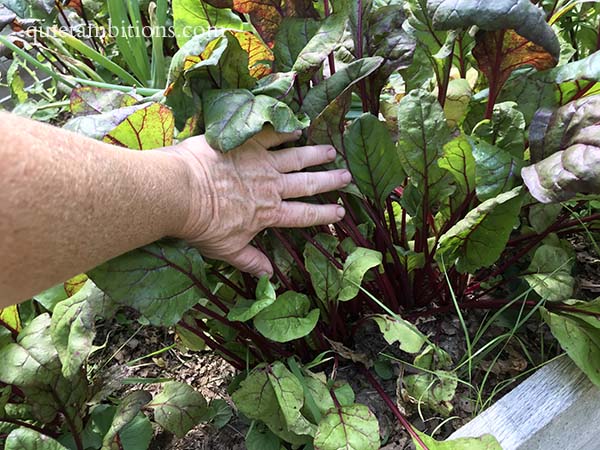
How to Store Beets
Beets store quite well under the right conditions. For storage in the fridge, remove the tops from the beets and put them in a bag. Leave 3-4 inches of the stems on the beets. It will help them retain color when you cook them. The greens will keep for a week or so. (Beet greens won’t keep nearly as long as the roots.) Beets may also be stored in a root cellar or under similar conditions, like a crate of sand.
Canning Recipes for Beets
Beets are one of my favorite things to preserve in the kitchen! There are so many ways to prepare them.
How to Pickle Beets
Because of their vinegar brine, pickled beets may be processed in a water bath canner, making this a fast and delicious way to preserve beets for later. Learn how to make pickled beets.
How to Can Plain Beets
Beets are also excellent canned in the pressure canner, though they do take a bit more processing time than pickled beets. Learn how to pressure can beets.
Can You Freeze Beets?
Yes! You can also freeze beets, providing you blanch them first. You can find instructions on this page: https://nchfp.uga.edu/how/freeze/beet.html
Beets FAQs & Tips
Beets are one of those veggies that people either like…or don’t. 😉 To me, they have a sweet, earthy flavor. When I was a kid they tasted like dirt. 😊 If you are one who thinks beets taste like dirt, try home grown. There is just no comparison of home grown beets and store purchased canned beets. They are so very different!
You can eat beets raw, but most people cook them first. I always cook my beets as well. If you do eat them raw be sure and wash well.
Fun fact! You can use the pickled beet brine to color your refrigerator pickled eggs (not a canning recipe). Learn how to make beet pickled eggs.
To cook raw beets, you’ll want to boil, steam, or roast them. I usually boil mine, depending on how many beets I have to prepare.
While I suppose you could certainly peel the beets using a vegetable peeler, it is less hassle if you cook the beets and then remove the peels. Learn how to peel and cook beets.
Beetroots are good for you, containing lots of important nutrients like folate, iron, potassium, vitamin C, and manganese! The leaves also provide vitamin A and calcium.
If your beet plants start bolting (that is, start producing seed) early, it usually means the conditions are too dry or cold (that is, below 50 degrees F). It is a natural reaction for the plant to think it is done and start producing seeds.
Pin this to find later!
